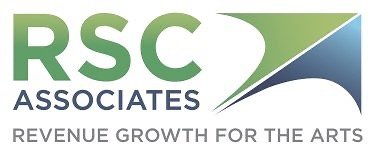THE PROS AND CONS OF DONOR-ADVISED FUNDS
With Bob Swaney
Let’s dive into a topic that’s generating plenty of discussion in fundraising circles: donor-advised funds, or DAFs.
Donor-advised funds are transforming charitable giving, offering donors a strategic, tax-efficient way to support nonprofits. But, like any fundraising tool, DAFs have their pros and cons—both for the families who create them and the nonprofits that rely on them.
Listen for insights on the benefits and downsides of DAFs for both the donor and the nonprofit organization.
Read the full transcript below or click the button to listen.
FULL TRANSCRIPT OF THE PODCAST
Today, we’re diving into a topic that’s generating plenty of discussion in fundraising circles: donor-advised funds, or DAFs.
Donor-advised funds are transforming charitable giving, offering donors a strategic, tax-efficient way to support nonprofits. But, like any fundraising tool, DAFs have their pros and cons—both for the families who create them and the nonprofits that rely on them. At RSC, we’re getting more and more questions about DAFs, so let’s break it down here to answer some of the more frequent questions.
First, let’s get on the same page about what a donor-advised fund actually is. Think of it as a charitable investment account. A donor makes a contribution—cash, stocks, or even real estate—receives an immediate tax deduction, and then recommends grants to their favorite nonprofits over time. The key word there? Recommends. While donors have significant influence, the sponsoring organization technically has the final say.
DAFs have seen explosive growth over the last decade, largely due to their tax advantages, investment potential, and convenience. But does that mean they’re always the best option for donors and nonprofits? Let’s start with the family perspective.
So, why are families drawn to DAFs? Here are a few big reasons:
1. When donors contribute to a DAF, they receive a tax deduction right away — even if they take their time deciding which charities to support.
2. Families can plan their giving over time, making grants when it makes the most impact.
3. DAFs eliminate the hassle of tracking multiple charitable contributions throughout the year.
4. Many families use DAFs as a way to involve children in charitable giving and build a philanthropic legacy.
5. Funds can be invested and grow tax-free, ultimately increasing charitable impact over time.
But it’s not all upside. Let’s talk about the challenges. There are some drawbacks families should be aware of when using DAFs:
1. Donors recommend grants, but the sponsoring organization has the final approval. While rare, a grant could be denied.
2. Unlike private foundations, DAFs don’t have mandatory annual distributions. That means funds can sit idle indefinitely.
3. Administrative and investment fees vary, and donors have limited control over how their funds are invested.
4. Critics argue that DAFs let donors reap tax benefits without guaranteeing funds are distributed to nonprofits in a timely manner.
So that’s the family perspective. Now, let’s shift gears and talk about the impact on nonprofits, including arts and cultural organizations.
From a nonprofit’s standpoint, DAFs can be a fantastic source of funding. Here’s why:
1. Some DAFs hold billions of dollars, creating new opportunities and avenues for nonprofit funding.
2. Since DAF donors are strategic about their giving, they often make significant contributions over time.
3. DAF distributions typically come from well-established organizations, making transactions smooth and reliable.
4. While it can be a challenge, some donors prefer to give anonymously, and DAFs provide that option.
5. Many DAF donors give consistently, providing a more stable revenue stream for nonprofits.
But, of course, there are challenges for nonprofits as well. Despite the benefits, nonprofit leaders have concerns about donor-advised funds, including:
1. Since gifts come from a sponsoring organization, nonprofits may not know who the actual donor is. This, of course, makes donor stewardship much more difficult.
2. There’s no guarantee that past DAF donors will continue their support in future years…and without knowledge of who the donor is, your ability to bring them closer to the organization is oftentimes hampered.
3. With limited donor data, nonprofits can struggle to properly thank and engage DAF donors.
4. Funds can sit in DAFs indefinitely, leaving nonprofits waiting for support that may never come.
5. Nonprofits must compete for funds that donors have already set aside for charity but have not yet disbursed.
So, where do we land on DAFs? Here’s the bottom line:
For families, DAFs are a smart, flexible way to manage charitable giving, offering tax benefits, investment growth, and a structured approach to philanthropy.
For nonprofits, DAFs are a mixed bag—offering significant funding opportunities but requiring additional effort to engage donors and secure distributions.
At the end of the day, donor-advised funds are neither inherently good nor bad—it’s all about how they’re used. When donors actively distribute funds and stay engaged with nonprofits, DAFs can be an incredibly powerful tool for philanthropy. But when funds sit idle, the impact is lost.
If you remember just one thing from today’s pod, make it this: Donor-advised funds have tremendous potential—but only if they’re actively used for charitable giving. Families need to stay proactive in recommending grants, and nonprofits need to get strategic about engaging DAF donors. The key is moving money from the fund into the community, where it can truly make an impact.



